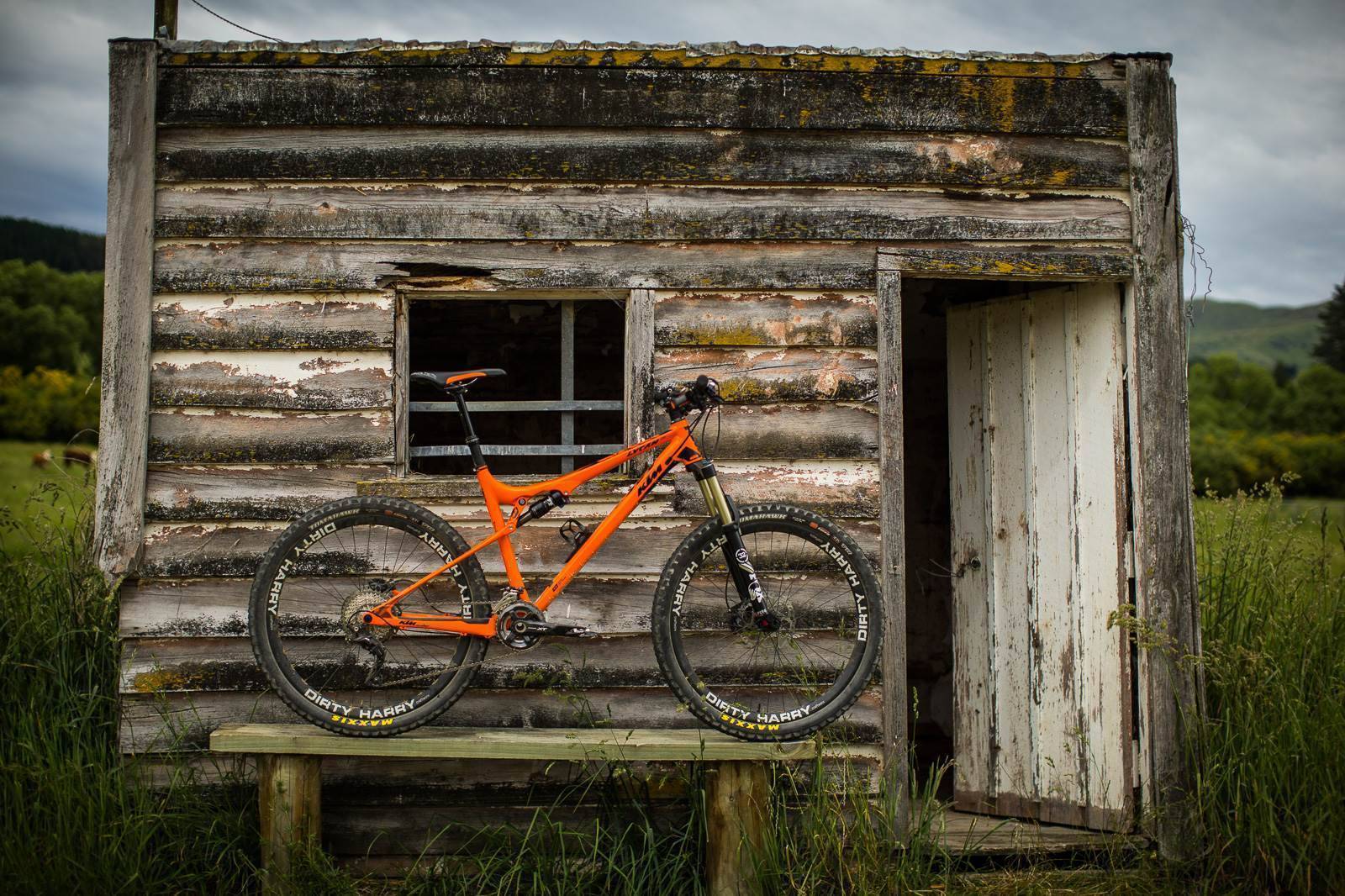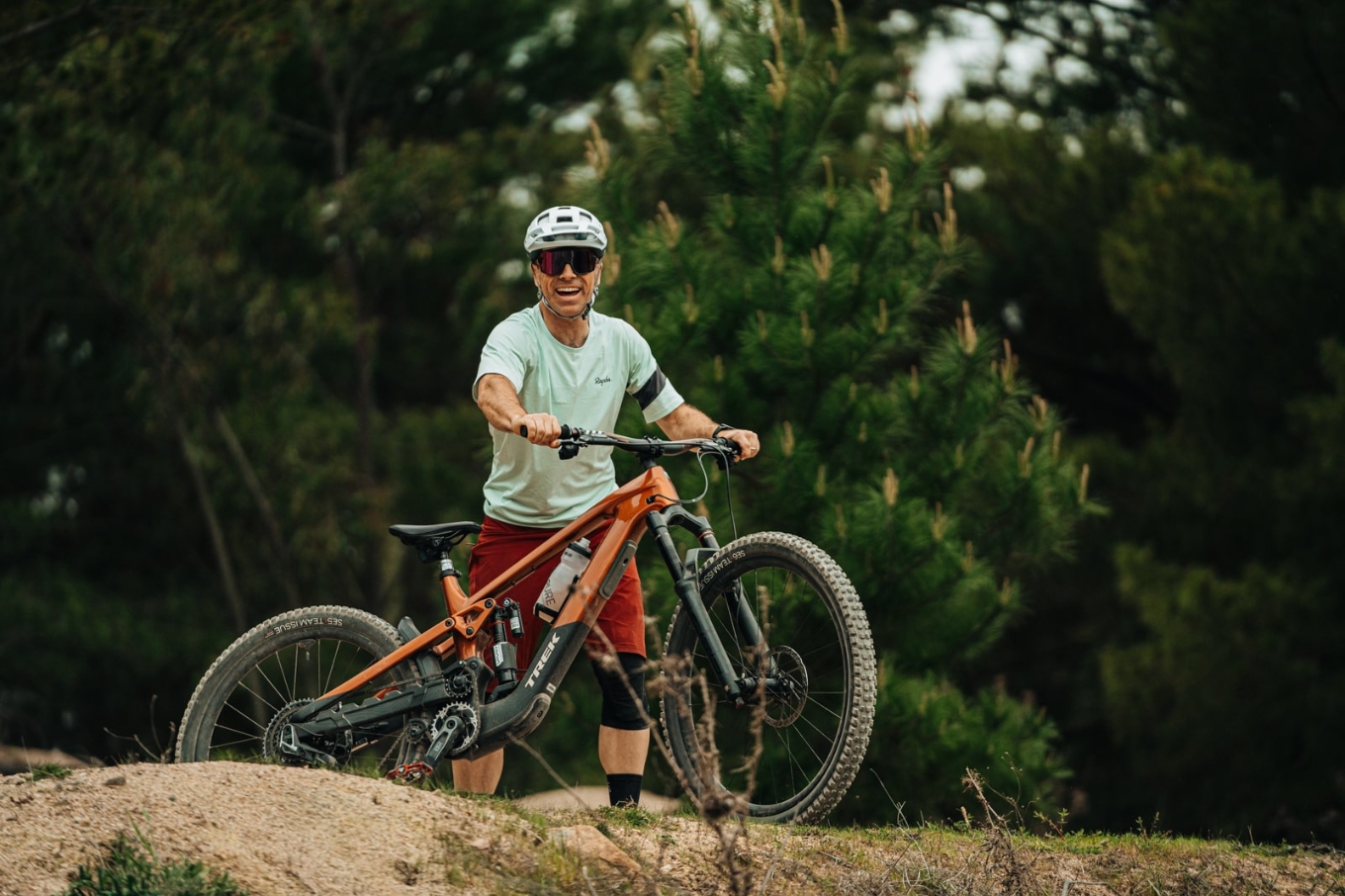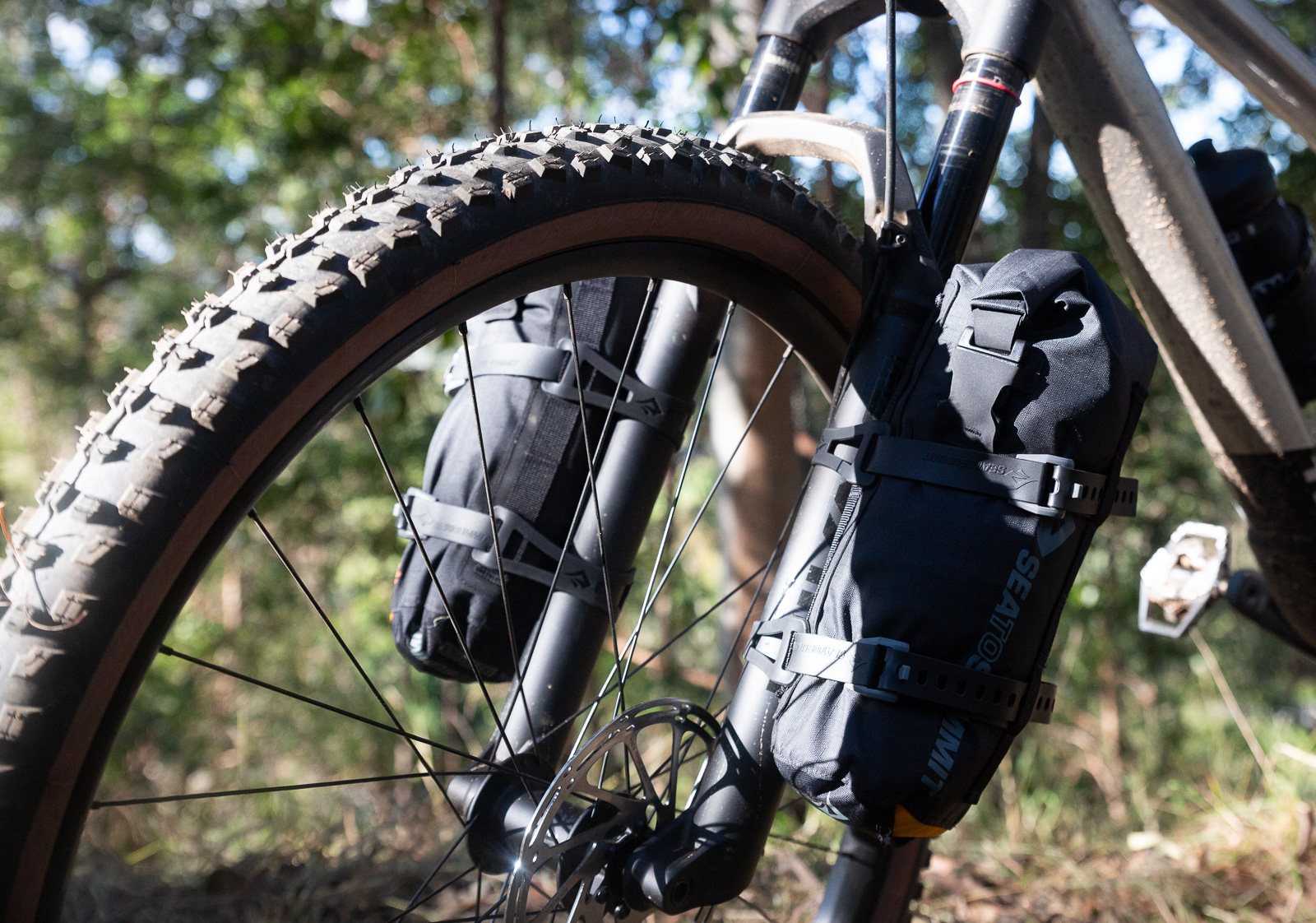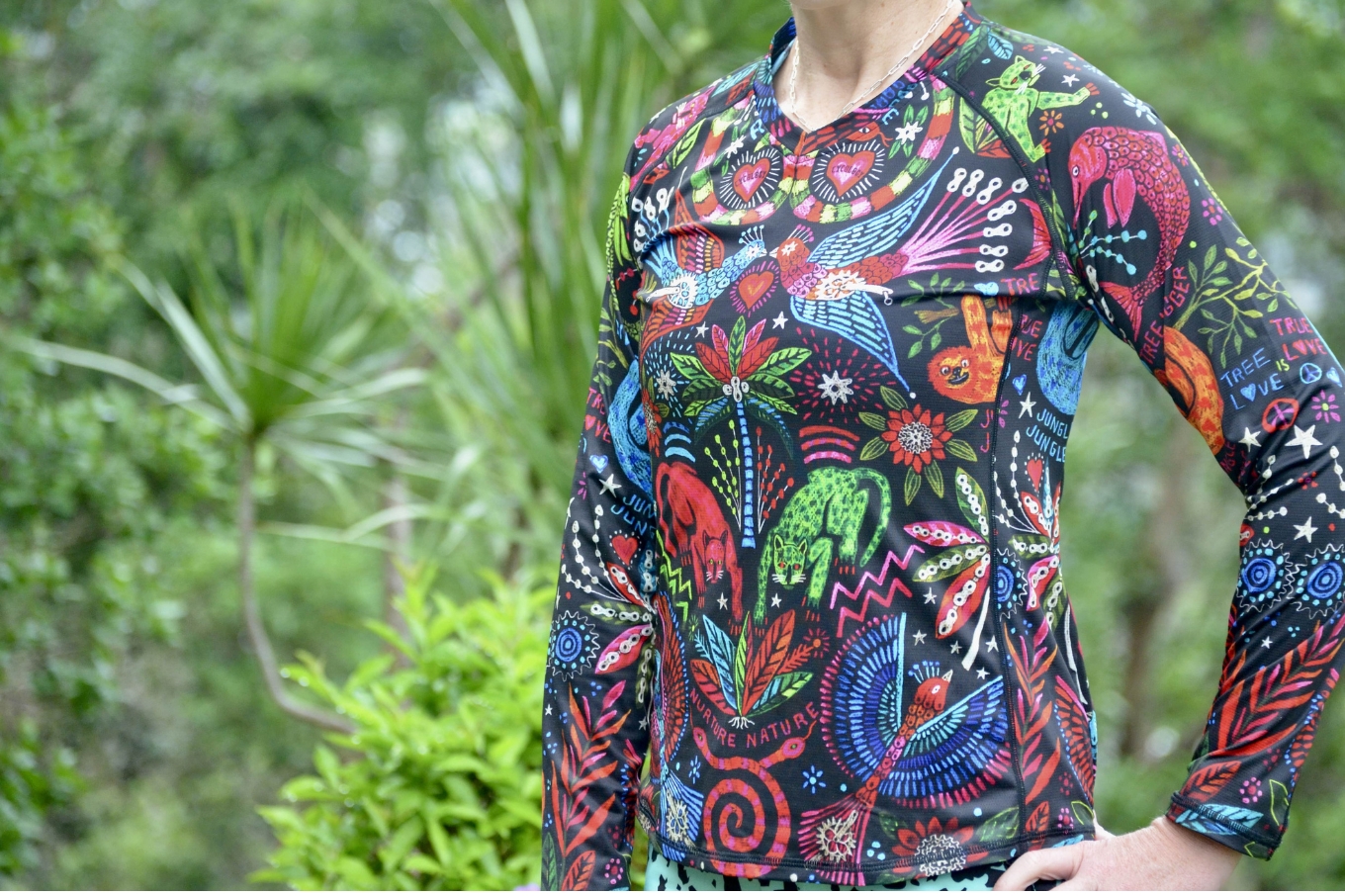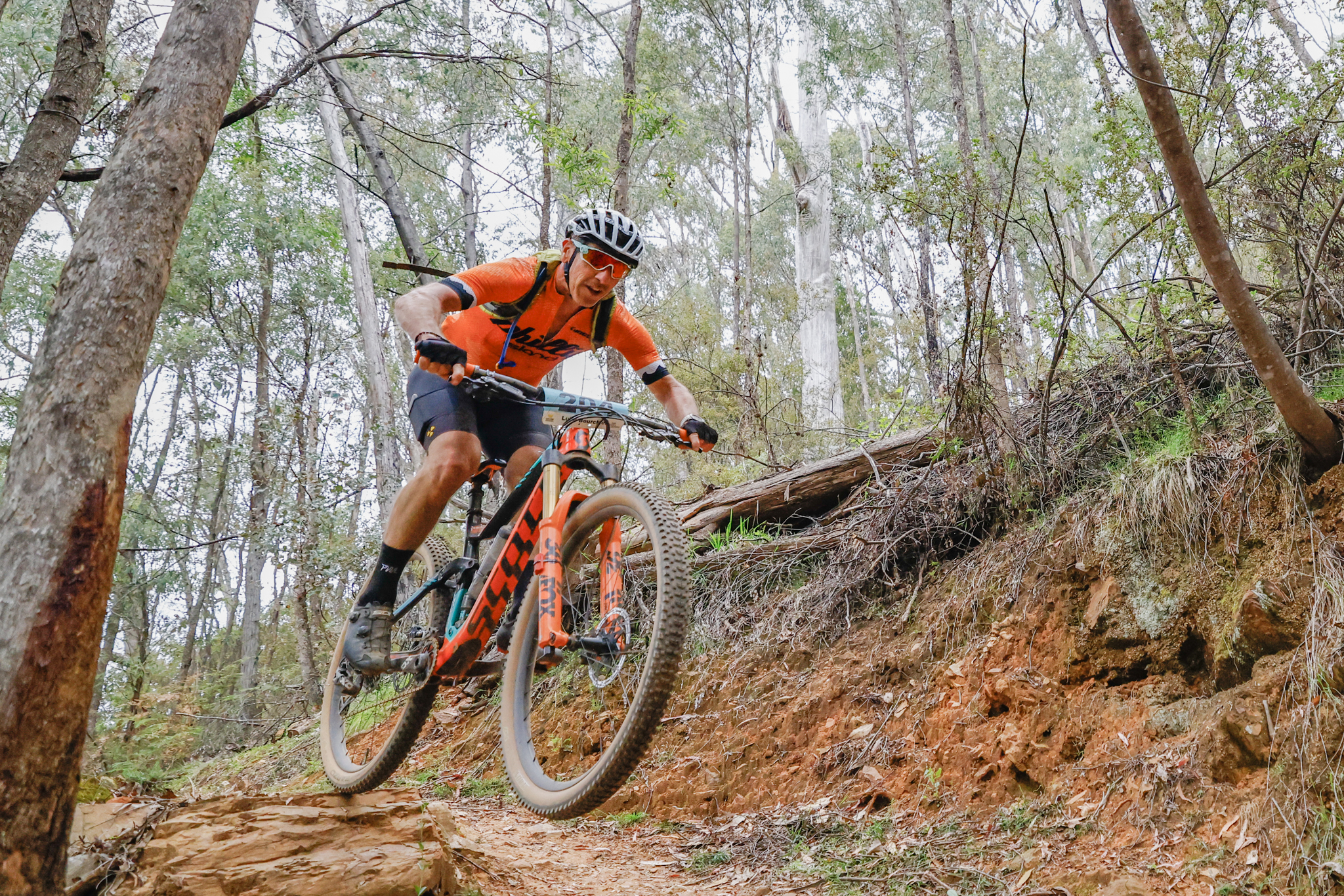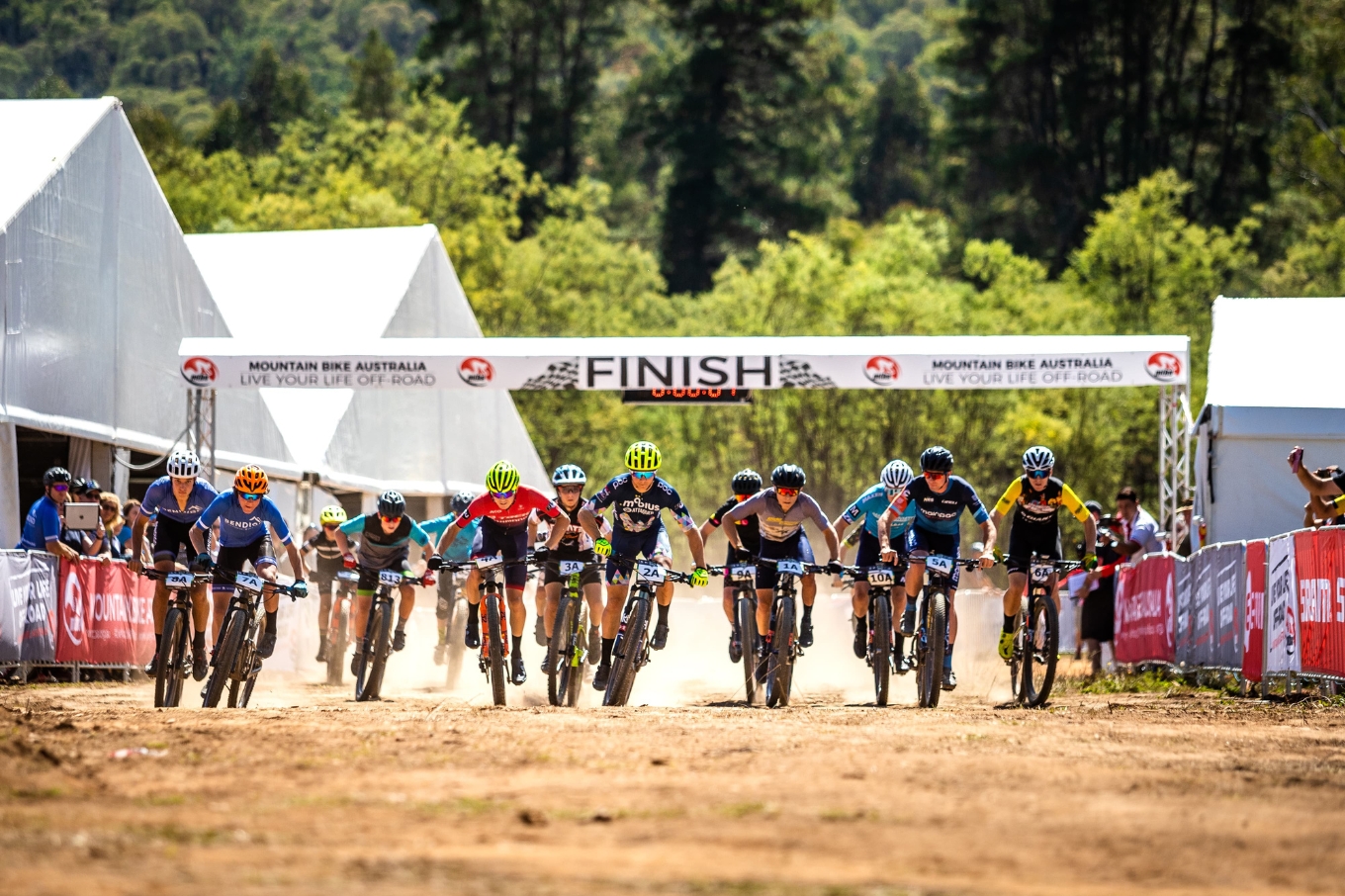TESTED: KTM Lycan 272
Have KTM created a well-built bike that is a ‘true mountain bike’? Is it the one bike to do it all ?
Words: Mike Blewitt Photos: Tim Bardsley- Smith
Think of KTM and your mind floods with bright orange and motorbikes. Even though I have visited the KTM factory in Mattighofen, Austria and understand they are no longer related to the motorbike brand it is a difficult connection to shake. KTM have recently celebrated 50 years of bike production, and they are sold in 50 countries around the world – including Australia. And while the central European bike company has a loyal following in Austria and Germany, chances are you won’t be accustomed to seeing a KTM on your local trails – at least not one powered purely by pedals.
Internationally, KTM have a range of hybrids, road and mountain bikes – but in Australia we just have a selection of the mountain bike range which are the models best suited to our terrain and riding. The Lycan sits below their longer travel Lycan LT (that we tested in early 2015) and above their cross-country focused Scarp. KTM claim that the 27.5” wheeled, 125mm travel Lycan 272 is “a real mountain bike designed for riders who want one bike that can do it all.” And with a handy suspension package, straightforward frame design and Shimano group set, it’s hard not to agree that this might be the case.
Initial Impressions
Orange. The thing is bright orange. But as far as bold colours go, it is fitting. Just like a Bianchi should be celeste, a KTM should be orange. Why buck the trend? Best of all, it’s a good quality paint job that shouldn’t date, unlike some of the current gaudy colour schemes going around. The frame itself is quite unique, and it looks like KTM have worked to get everything they can out of aluminium with this frame, using triple-butted tubing, shaped for low standover height with the shock visually sitting into the top tube. The tubing is actually just nicely flattened, with the mount seamlessly extending downwards. There are external mounts to guide a remote lock out cable or hose, but the Fox Float DPS shock that’s fitted isn’t a remote model. All other cables or hoses – save for the front brake and lock out – run internally.
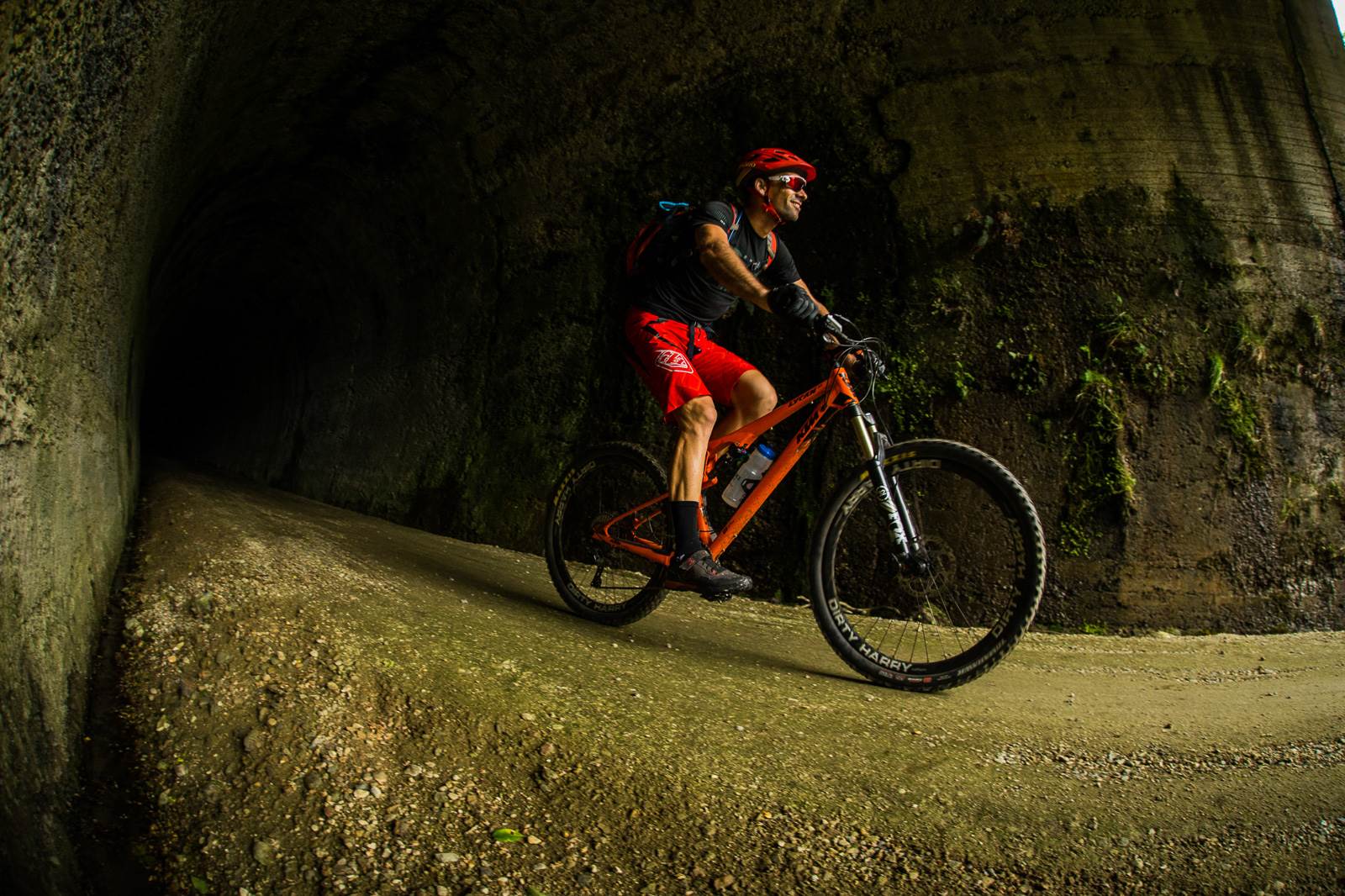
The downtube is of reasonable size from the tapered headtube down to the press-fit bottom bracket, and the main pivot sits above and behind the bottom bracket shell, running on large bearings. The chainstay length is a moderate 433mm, and the tubing runs from a tall profile to a narrower guage at the 142×12 through-axle. And here, things get a little different. The post-mount discs are your normal fare, but there is no pivot near the drop out. KTM call it the Rocker Blade, and use it with their Straight Line Link for a very direct path from the rear wheel to the rear shock. It does keep the back end pretty neat, but realistically turns the bike into a single pivot design, with a linkage actuated shock.
Numbers wise, our 19” test bike has a 68.5 degree head angle and 620mm top tube. This is an updated geometry for the Lycan, and while the 130/125mm travel front and rear really had me thinking ‘trail bike’, the not-so-slack head angle and moderate length top tube, with a steep seat angle and narrow 720mm bars had me wondering. In KTM’s European catalogue they suggest that the Lycan has been transformed into a weapon for marathons. That puts the Lycan against bikes like the Scott Spark, and makes the 2×11 Shimano XT M8000 group set make sense, plus the narrower legged Fox 32 Float fork, and the racey Schwalbe Rocket Ron tyres.
The frame has three water bottle mounts. One on the down tube, one on the seat tube which will fit a 500mL bottle in a side-mount cage, and one under the down tube. In an age where 29er full-suspension brands are scrambling to get two mounts inside the frame as a point of difference, KTM have gone and whacked two within the frame and one below, with very little song and dance about it.
Overall, the frame is very nicely finished. The pivots are neat, the welds are even, and while there might be a lot graphics with numbers on them, the ‘Made in Austria’ sticker stands out. While the raw frame parts are manufactured in Taiwan, all the rest of the bike’s production happens in little Mattighofen. That includes the painting and stickers, the wheel build and tyre fitting, the full bike build, the testing, then boxing up to be sent out. This level of production in Europe means KTM can claim it is made there. And it’s about as close as you’re going to get to a ‘made in Europe’ mountain bike without buying something custom and highly boutique.
There is little to fault with the group set – a combination of XT M8000 2×11 and SLX brakes is highly reliable. If you don’t like 2x, swap to a 1x specific ring and a broader range cassette. It’s easy. Of note, the SLX brakes aren’t the current generation, which has little bearing on power, and really only changes lever body shape and clamp specifics for iSpec compatiblitity. And that brings me to the controls – it’s a crowded cockpit. With bar clamp shifters and the wider bar clamp of the M675 lever, plus of course the KS dropper lever and the Fox lockout for the fork – it isn’t the most ergonomic set up. Taking the shifter displays off to get the lock out lever more outboard, running 1x if it suits, or even going to a manual lock out would sort things for a more ergonomic and cleaner cockpit. I would also suggest a wider handlebar and possibly a shorter stem, depending on how the reach is for you. 720mm is good on an XC bike but I really feel the KTM needs a 740mm or wider handlebar and a 60mm stem – especially to keep the not overly slack bike in check on the type of trails that look so inviting when you have 125mm of travel.
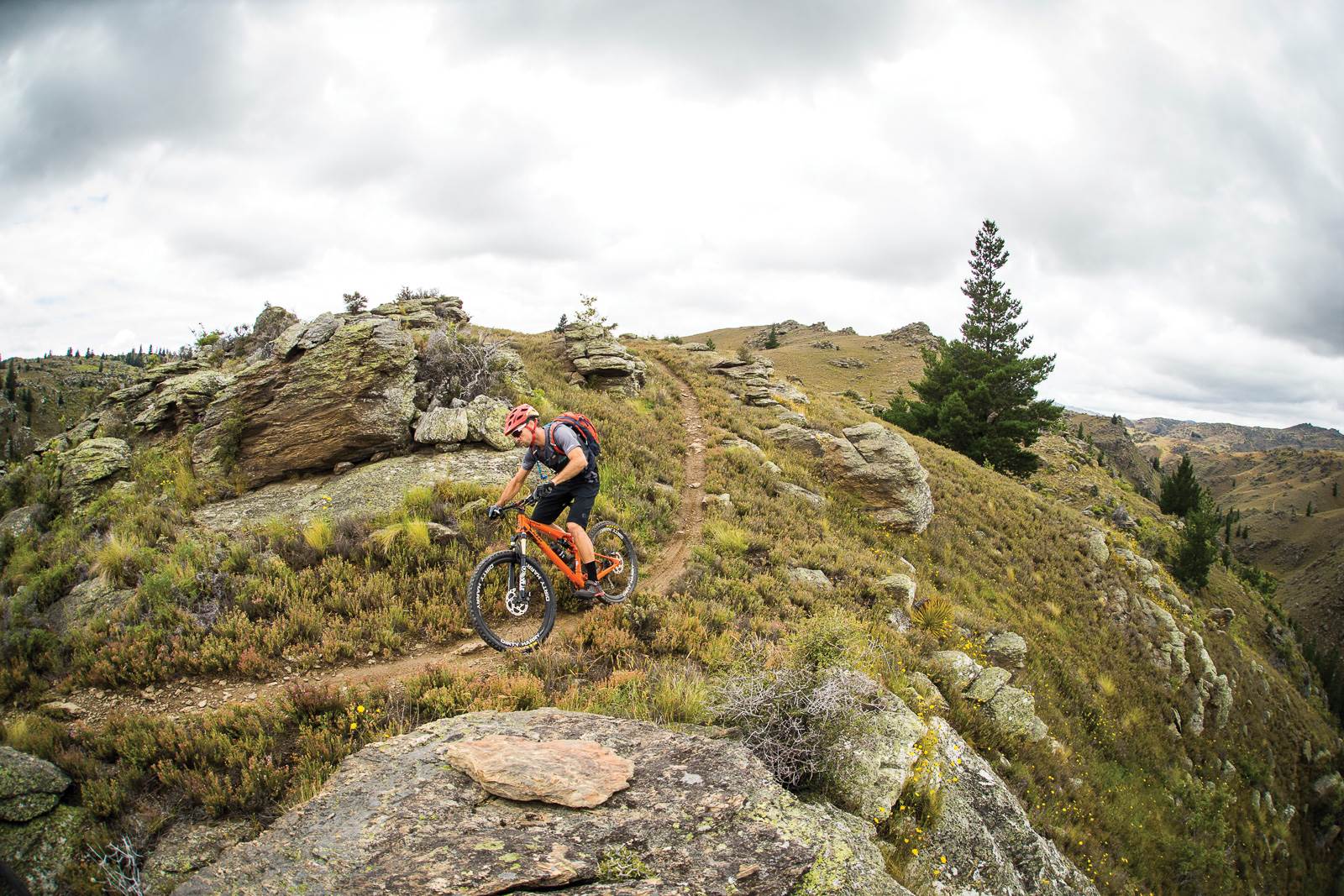
KTM partnered with DT-Swiss in 2014 to ensure their wheels were more reliable. The KTM branded rims are actually DT-Swiss models, and can be made tubeless with relative ease – plus the build quality is top-notch. All the wheels for KTM bikes are built in-house in Mattighofen, and manually checked for tolerances. Of note, we were testing the Craftworx Dirty Harry wheels shod with Maxxis during the photo shoot.
The Fox suspension are great units, but the fork is a little at odds with the bike. The DPS rear shock is ideal, but the Float 32 is probably under-gunned for a 130mm fork. A Float 34 Performance model would likely have been a better choice, as it’s a minimal gain in weight for more steering precision under load. My real questions were based on whether the bike would ride like a quick-handling trail bike, or more like a long travel cross-country bike once I hit the trails.
On The Trail
Saddling up on the Lycan, the reach feels a little short for the stated length of the bike, and this is in part due to the steep seat angle. The plus side of this, along with the suspension action, is that the bike climbs amazingly for a 125mm travel bike. The steeper position does keep you ready to get out of the seat to punch over the top of steep sections, and the frame is super stiff laterally when you do so.
The Fox DPS rear shocks are pressure sensitive, which makes them work so well! It is worthwhile getting your sag right. I settled on 25 per cent sag, which allowed for a plush stroke without bottoming out, but it helped the bike not ‘settle’ too much when climbing. I did find the bottom bracket felt a little low on technical climbs when fully open, so ran the middle setting on the shock so the bike maintained its ride height a little better. This was also the preferred setting for flatter and smoother trails – and it really played to the bike’s strengths.
Much of the riding I did on the Lycan was in New Zealand while visiting the Central Otago region (that’s east of Queenstown on the South Island). The riding is a real mix, with steep and technical lines that are part of the Trans NZ enduro, to swoopy singletrack built in the hills above Alexandra, to cycle paths and raw pine forest singletrack. On the steepest, rockiest terrain, the Lycan did feel much more like a long-travel cross-country bike. While the suspension action was up to the task, the handling was a little nervous. But as soon as the terrain wasn’t as steep, it was right in its element. The bike’s agility and frame stiffness, combined with a quality build kit meant that you could happily push the bike hard through rougher lines, or pop over them. But high speeds on steep terrain, or really rough and steep terrain, just weren’t very comfortable on the Lycan and more suited to its bigger brother, the Lycan LT.
And that is the choice for the Lycan, and the rider interested in the KTM Lycan. Do you want a bike with cross-country efficiency, but some longer travel for rougher trails or greater comfort? The Lycan might be the exact bike you’re looking for. While it doesn’t quite fit into the modern aggressive trail bike spaceit doesn’t mean it’s not a blast to ride!
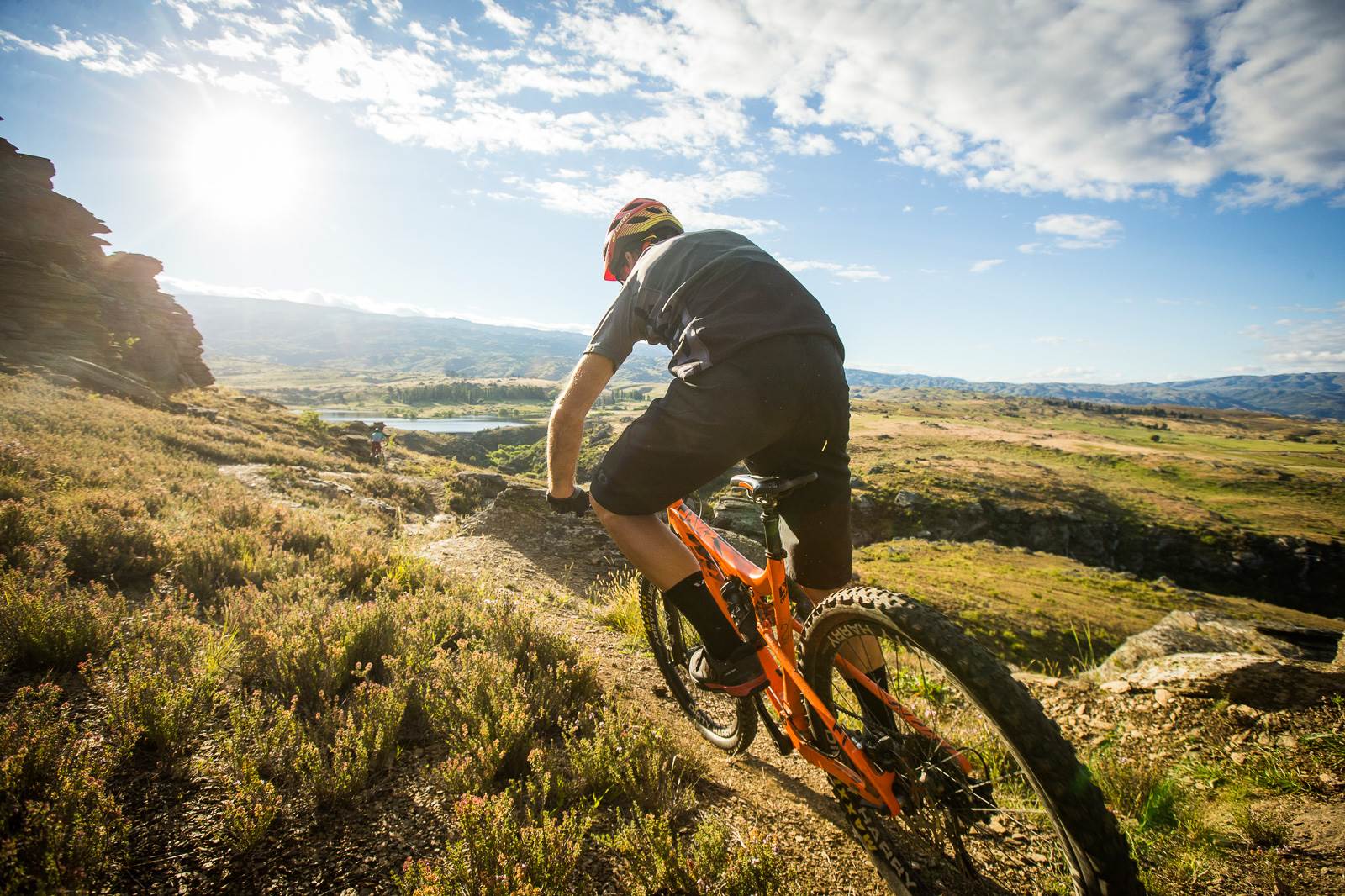
Bikes with about 120mm of travel that are more stable than XC bikes are really starting to grow in popularity. Bikes like the Lycan are ideal for those riders who want an efficient riding bike, with great agility, and some more travel for harder lines. The new Giant Anthem walks a similar line, as does the Norco Optic. If I was pushed to create a new sub-genre for bikes like this, it would have to be ‘fast trail’ or ‘cross-country trail’. Although I suspect some marketing department will come up with something different. The reality is, the Lycan will suit riders who don’t want to take a chance on not making it to work on Monday on their weekend rides, and who aren’t likely to be lining up on the front to race in anger any time soon. In short, it’s a good all-purpose mountain bike.
Our Take
KTM have created a well-built bike that is a ‘true mountain bike’, but I’m not convinced it is the one bike to do it all – but then I’m not convinced any bike is, unless your version of ‘all’ has limitations.
The Lycan is a perfect all-day trail bike, for riders who want an efficient ride from a high-end aluminium bike, as opposed to a mid-grade carbon fibre offering. The quality of the build kit, suspension, dropper post and frame cannot be questioned – but it does come down to whether the bike’s handling suits your needs. The agile handling, suspension adjustability and good climbing suits many of Australia’s growing trail centres. From Atherton to Mt Buller, from Falls Creek to Derby – the Lycan would be at ease. But if you were to take the Lycan to some steeper, looser terrain, on trails that merge towards all-mountain, you will quickly find the limits of the machine. I do believe with a few key upgrades to the cockpit, and perhaps the tyres, you will be rewarded with a high-end aluminium bike that is an all day trail bike highly suited to the growing trail networks within Australia.

